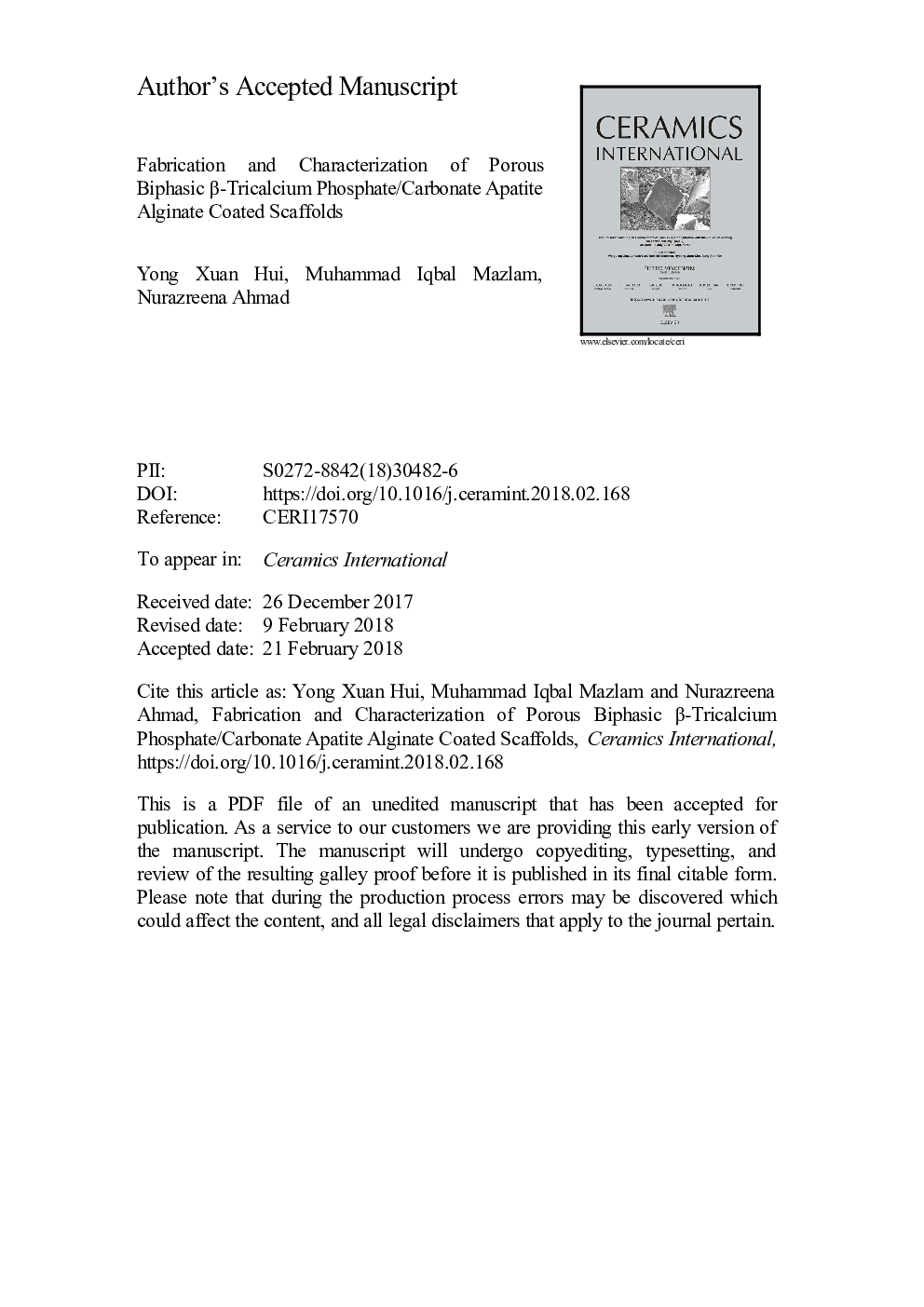| Article ID | Journal | Published Year | Pages | File Type |
|---|---|---|---|---|
| 7887950 | Ceramics International | 2018 | 25 Pages |
Abstract
In this research, biphasic β-tricalcium phosphate/carbonate apatite (β-TCP/CO3Ap) scaffolds incorporated with alginate were fabricated. Sodium alginate was extracted from local brown seaweed, Sargassum polycystum via calcium alginate process. Biphasic β-TCP/CO3Ap scaffolds were fabricated by polymer reticulate method. β-TCP slurry was infiltrated into the polyurethane foam (PU) foam, then sintered up to 1300â¯Â°C, soaked for 4â¯h and immediately quenched in still air to form biphasic β-TCP/α-TCP scaffold. Biphasic β-TCP/α-TCP scaffold was then transformed to biphasic β-TCP/CO3Ap scaffold by dissolution-precipitation reaction with 1â¯M of NaHCO3 at 170â¯Â°C for 1, 3 and 5 days. Biphasic β-TCP/CO3Ap scaffold from 5 days dissolution-precipitation reaction was chosen to incorporate with 1%, 3% and 5% of sodium alginate, respectively, as it has the highest composition of CO3Ap phase. FTIR and FESEM analysis confirmed the presence of characteristic functional groups of sodium alginate. Mechanical strength of biphasic β-TCP/CO3Ap scaffold improved by increasing the concentration of sodium alginate. The highest mechanical strength achieved was 26.38 kPa for biphasic β-TCP/CO3Ap scaffold with 5% sodium alginate coating and it was chosen to further study with the addition of 1%, 3% and 5% microspheres. FESEM analysis confirmed the attachment of microspheres on the surface of alginate/biphasic β-TCP/CO3Ap scaffold was successful.
Keywords
Related Topics
Physical Sciences and Engineering
Materials Science
Ceramics and Composites
Authors
Xuan Hui Yong, Muhammad Iqbal Mazlam, Nurazreena Ahmad,
